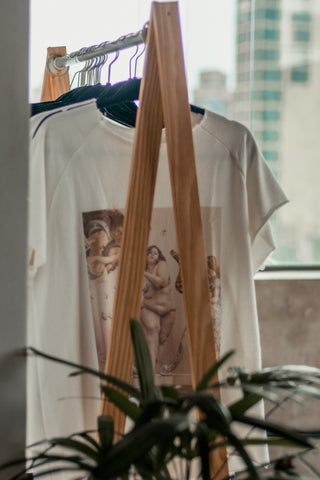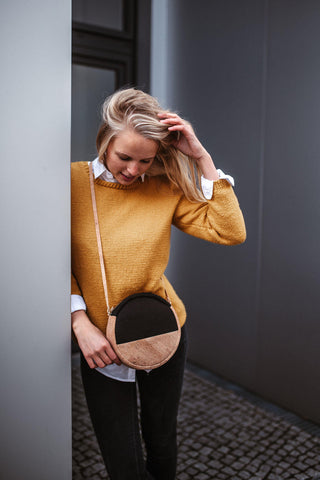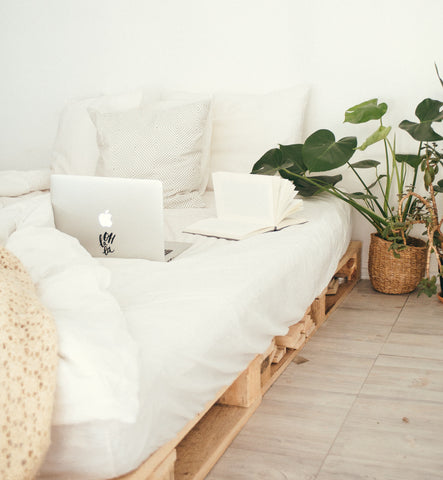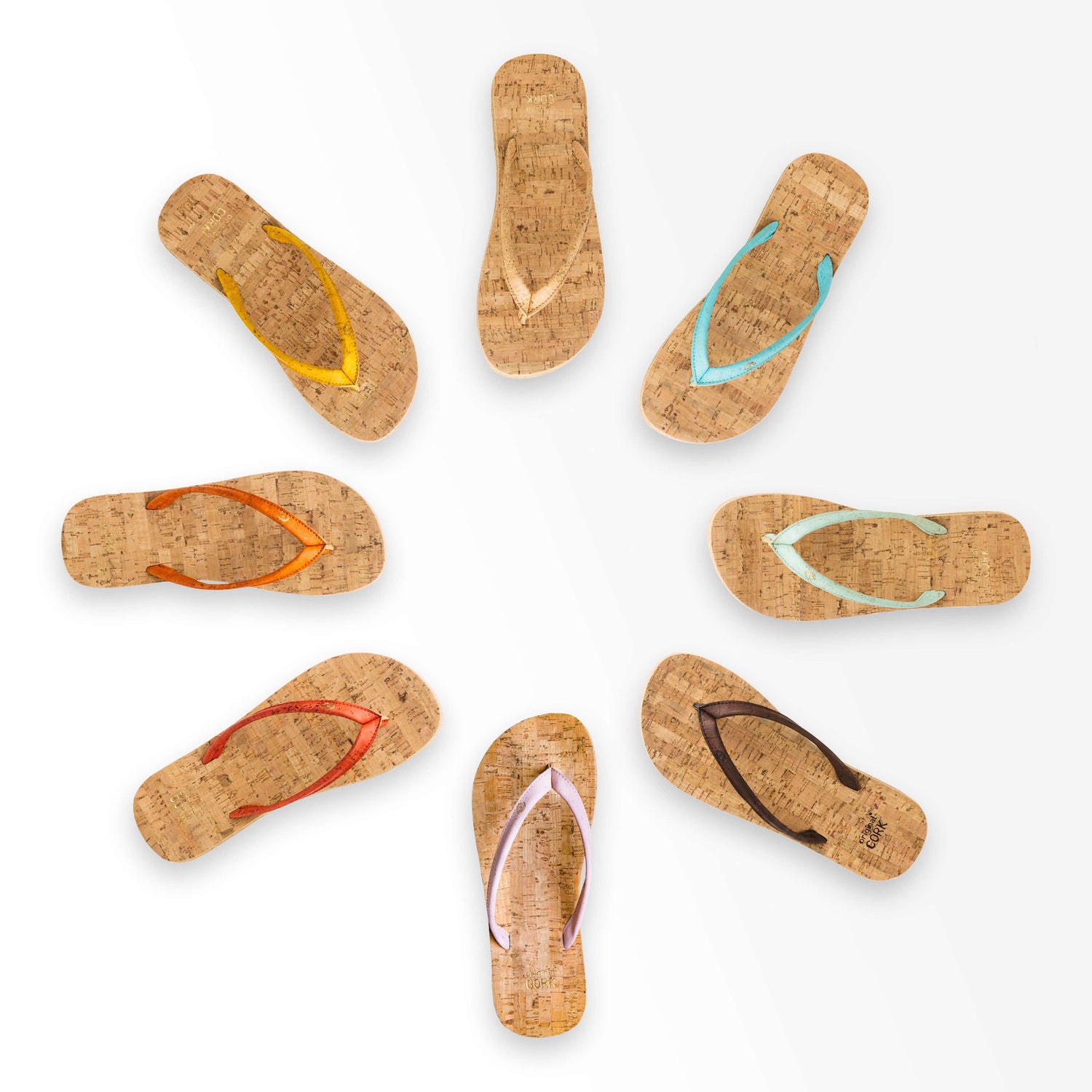Fast fashion is unfortunately everywhere we look. Consumerism is pushed on all of us at every turn, and advertisements aim to make us feel like the more we buy, the happier we will be. But we know that you, like us, don't buy into this toxic mindset. Over the years, we've learned that buying lots of things doesn't equate to happiness, but just the opposite. We think that shopping should not be treated as a fun activity that we indulge in whenever we are bored or need a pick-me-up. Endlessly shopping for trendy, inexpensive clothes and accessories made by fast fashion outlets contributes to developing a "throw-away" mentality towards our clothes. We end up supporting a destructive chain of toxic materials, exploited workers, and cheaply made clothing that will fall apart, just for the thrill of buying new things.
It might seem like the idea of "minimalist shopping" would go against the "interests" of an online store. But this is not our view, as our store is filled with sustainably made, handcrafted, and long-lasting items, just what a minimalist shopper should be looking for. Our definition of "minimalist shopping" is simply being mindful of what we purchase, and aiming to make carefully considered decisions of what is worthy of a place in our wardrobes for years to come. It is not deprivation, but discernment between what truly serves us and what is only a fleeting material desire.
So, what are the benefits of learning to shop like a minimalist? Here's our list of 5 good reasons to slow down your fashion consumption and step away from the fast-fashion sales rack.

1. Create a closet of loved items only
It may be tempting to buy low-cost items on impulse, but these purchases often end up forgotten about in the back of the closet. Buying a lot of inexpensive items may feel like you're saving money in the short term, but in the end, you'll wind up with a bunch of things that you don't really care about, or perhaps even like at all, and depending on how much fast fashion you consume, you might even end up cumulatively spending just as much as you would have spent for fewer sustainable, quality-made items that you would love, wear, and repair for years.
It can feel overwhelming to have a ton of fast-fashion items that you don't want to wear, as remnants of past trends and so-called "good deals," mixed in with the clothes that you do actively wear. It can feel difficult to start making headway through your clothes to donate the superfluous if you've had a long-term fast-fashion habit.
If you start to fill your closet with sustainable and timeless pieces, you won't feel the need to constantly buy new things, and you will have a much clearer vision of what you already own and which items you hold dear.
Instead of following the crowd and the latest trends, create a small but complete collection of unique, well-made pieces that highlight your style, and that you can easily mix and match in a variety of ways throughout the year. It will feel more rewarding to open your closet and see only things that you know you love to wear, instead of countless items that no longer serve your needs.

2. Use less packaging
Obvious as it may be, the less we buy, the less packaging materials we use in the process. Going shopping at the mall at fast-fashion retailers usually involves carrying home new items in countless plastic bags, not to mention the tags, labels, and other packaging materials that will need to be discarded. On the other hand, most ethical and sustainable brands and stores make a concerted effort to use as little packaging as possible, which is another perk of ditching fast fashion for buying sustainably made items.

3. Save time getting ready
Instead of staring at a closet full of junk and clutter, when you make room in plain sight for the pieces that make you feel good and that you truly enjoy wearing, getting ready also becomes much quicker and easier. Once you can clearly see what you have, you will save time making decisions and sorting through your closet when getting dressed in the morning.

4. Buy less, buy better
Minimalist shopping means making less frivolous and unnecessary purchases and buying quality items that are made to last, not fall apart. This may mean spending more on just one individual purchase, but making an educated and contemplated decision before buying. Do you need this item or is it something that you absolutely love? Is it sustainably and ethically made? Sustainable and fair trade items often have a higher price tag but are made with care and with the intent to last. The better quality the item, the more likely it is to serve you well throughout the years. You will need to replace it less frequently, and you will be more inclined to fix it if need be, rather than tossing it in the donation bin.

5. Create a more comfortable, open space
Less clutter is always better - for staying organized, for clarity, for purposeful creation. When you buy only what you want, love, and need, you will start to create a smaller, more thoughtful, curated wardrobe. You will probably find yourself with more room in your closet and less clothing piled up on chairs and racks in your room. With less clothing clutter and more open space, your room will feel more like a place where you can fully relax and unwind. Instead of clothes lying around, you can add other decorative items to your space, such as books, plants, throw blankets, and candles.
________________________________________________________________
These are some of the many perks that come with learning to buy less in terms of quantity in exchange for higher quality, sustainably-made items. Instead of having an overflowing closet of items that you don't feel great about, choose fewer items that you intend to wear and care for over an extended period, that can be combined with other pieces in your wardrobe. Make room to focus on what is important by removing the distractions, which are in this case low-quality, poorly-made fast-fashion pieces. Consciously examining our habits of consumption and resolving to buy less but better is where slow fashion habits begin and fast-fashion addictions end.
Thoughts? Let us know below.



1 comment
Loved how this highlights the real perks of minimalist shopping—living with more intention, clutter-free clarity, and smarter spending. https://saveplus.in/